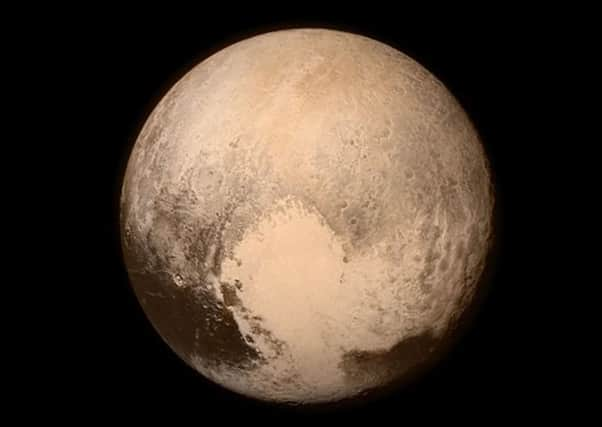What will we really learn from the Pluto flyby?


Like much to do with space exploration, the build-up was agonisingly slow and the climax, when it came, was predictably brief.
It was in 2006 that the American spacecraft New Horizons began its three billion mile journey to Pluto. Its aim was to send back to Earth images of the last truly unexplored world in the solar system and shortly after 12.49pm yesterday afternoon it hurtled past its final destination, grabbing a mass of pictures and other scientific data. After nine years, it was job done within a matter of minutes.
Advertisement
Hide AdAdvertisement
Hide AdWith light taking more than four hours to reach Earth, it will be a little while before all the images filter through, but much has already changed since the $700m probe, the size of a grand piano and carrying the ashes of the man who had discovered Pluto, was launched into space. Not least the fact that Pluto itself, which lies in a region known as the Kuiper Belt, was unceremoniously downgraded from planet to mere planetoid.
That did little to curtail the celebrations in the Applied Physics Laboratory at John Hopkins University in Maryland where mission control staff and visitors marked the event with the usual chanting of ‘USA, USA’.
The mission marks the conclusion of the American space agency Nasa’s quest to explore every planet in the solar system, which started with Venus in 1962. So was it all worth it?
“This is truly a landmark in human history. People often think the success of missions like this is about engineers, the hardware, but the real key is team work. We’re not talking to the spacecraft at the moment; it’s doing its job. Once we get the signal, the ping, (telling us) that it made it through the system, it will be ready to start sending us a treasure trove of data.”
Advertisement
Hide AdAdvertisement
Hide AdHowever, New Horizons has already answered one basic question about Pluto - its precise size. Scientists have used photographs from the spacecraft’s telescopic camera, to determine the dwarf planet is somewhat larger than previously thought, having a diameter of 1,473 miles.
The result confirms that Pluto is larger than any other known solar system object beyond the orbit of Neptune,” said mission scientist Dr Bill McKinnon. “It’s size has been debated since its discovery, so we are finally glad to be able to lay this one to rest.”
The technical achievement of the probe successfully arriving at such a tiny target so far away, was described by one scientist as “like hitting a golf ball from Capitol Hill and making a hole in one on the west coast of the United States intentionally”. However, the true worth of the project will only be known in the months and years to come as the images undergo painstaking analysis.
“This is really unexplored territory,” said Brendan Owens, from the Greenwich Royal Observatory in London. “The images of Pluto we got previously have only been a few pixels across, just showing areas of light and dark on this world. Now we are getting up close and personal, something that has never been done before.
Advertisement
Hide AdAdvertisement
Hide Ad“The whole region is hard for astronomers to explore because we rely on light and at that distance so little sunlight falls on these objects that you have very little data to work with. Learning about the composition of Pluto may give us more of a handle on the make-up of the solar system.”
An early image received from New Horizons last week showed Pluto as a copper-coloured globe bearing a large bright spot in the shape of a heart. Later photos taken from a million miles away have revealed cliffs, craters and chasms larger than the Earth’s Grand Canyon.
The mission’s principal scientist Alan Stern, told the Association Press news agency: “We’re going to knock your socks off. What Nasa’s doing with New Horizon is unprecedented in our time... the last picture show for a very, very long time.”